Why Ohm? In short, our patented driver technology allows us to create the best possible listening experience. Read below to discover some of the elements of what makes Ohm speakers unique.
Full Room Stereo
You will hear a wide, tall and deep 3-D sonic image of the performers from almost any place in the room - not only in one tiny spot directly in front of the speakers.
True high fidelity loudspeakers should be able to create a three dimensional (3-D) sonic picture of a musical performance.
Conventional speakers that can do this are few and far between, and only the listener sitting directly in front of the speakers would enjoy the full benefits. Everyone else in the room would hear a performance dominated by sound from the nearest speaker.
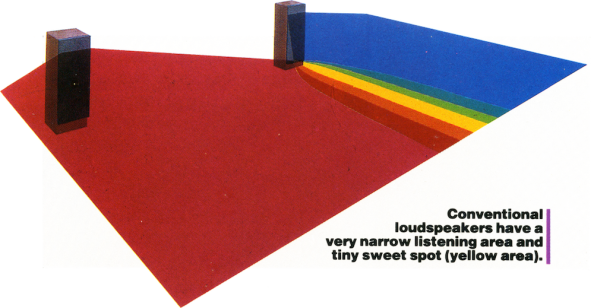
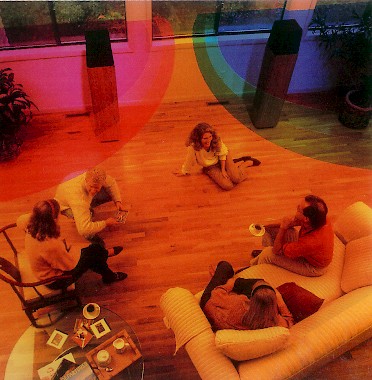
With Ohm Acoustics speakers, all the listeners in the room hear a balanced 3-D image. Wherever you sit in the room, the extra distance the sound has to travel to reach you from the speaker is exactly offset by that speaker’s louder output from that direction. If the same level of sound is fed to both speakers, the listeners on the far left hear both speakers at the same level, even though they are much farther from the right speaker than the left.
This acoustical technique is called Controlled Directivity, and it takes advantage of the fact that humans localize the source of sound using different cuing mechanisms at different frequencies. It isn’t enough to merely aim speakers diagonally across the listening area. In each frequency range the output level and directivity must be carefully regulated to achieve the desired results. This Full Room Stereo capability allows everyone in the room to enjoy the performance as much as the person sitting in dead center. All Ohm speakers are designed to deliver Full Room Stereo.
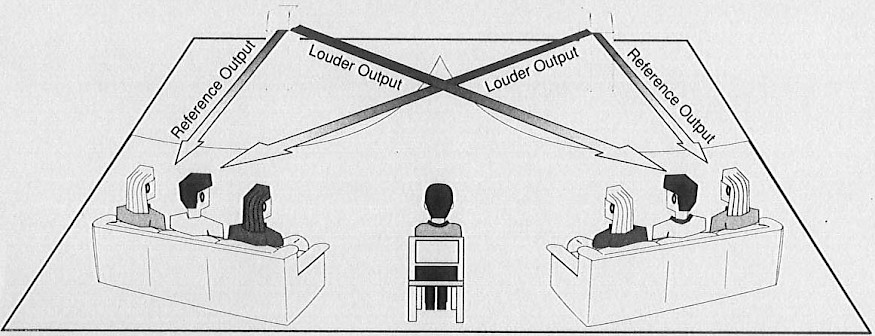
3-D Stereo Imaging
If the music recording or sound track is well-produced, you’ll hear each performer’s exact location in height, width and depth. The ambiance of the performance hall will be accurately conveyed across your listening room. As The New York Times said about the Walsh 2, it ”…creates a reach-out-and-touch-it realism.” Movie sound tracks will transport you to the location of the film and draw you into the scene.
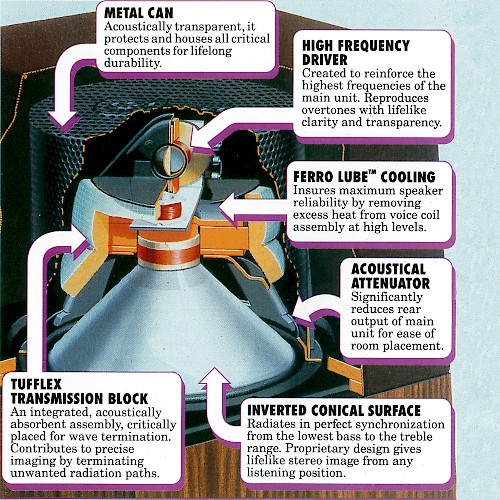
Wave Form Fidelity
Sound is the varying of pressure over time. A chart of this for an event is its ”wave-form”. A microphone converts the pressure into an electrical signal. With a perfect microphone the electrical wave-form will match the sound wave-form. When you ”receive” the actual wave-form output of the sound from Ohm Loudspeakers, it closely matches the electrical wave-form input to the loudspeaker. This is not true with most loudspeakers, but with Ohms you accurately hear what was recorded. You can recognize the original source and subtle distinct characteristics: a bass guitar sounds like a bass guitar (not a bass violin), and a nine millimeter automatic sounds like a nine millimeter automatic (not a .22 revolver). Ohm loudspeakers do not add a character of their own. When you listen through Ohm loudspeakers you actually hear the source.
The loudspeaker’s transduction and its interaction with the room is the last step in sound reproduction. They should neither add nor subtract anything to the signal coming from the source. They are not supposed to be sound creators like a musical instrument, but transducers converting the electrical signal to an acoustic signal.
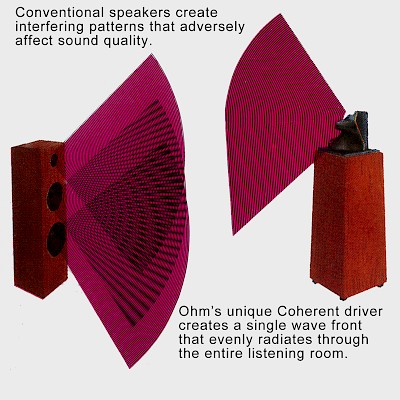
Coherent Line Source Driver
Like waves radiating from the splash of a single stone, CLS drivers eliminate multiple-source distortions to create precise sound images and a very smooth, accurate sound quality.
The Ohm CLS Driver is a vertical line source that combines inherently perfect time and phase alignment and uniform polar frequency response. These characteristics are vital for the recreation of a three dimensional (3-D) sonic image and they cannot all be achieved with conventional speakers.
At the source, the sound originates simultaneously from the face of the super tweeter and the top of the inverted cone driver. The same sound travels down the cone surface faster than it can travel in air (supersonic). The sound radiating from the cone surface and the sound radiating in the air remain vertically aligned as they arrive perpendicular to the rim simultaneously and expand continuously in all directions.
At the higher frequencies the sound is more directional, radiating in the general direction of the super tweeter. Furthermore, unwanted rear output from the inverted cone driver is blocked by Tufflex sound barriers to eliminate the close-order reflections that would confuse imaging. As a result, all sounds are perfectly in time and phase alignment as if they radiated from a perfect vertical line source, yet create no false images from nearby surfaces or baffle boards.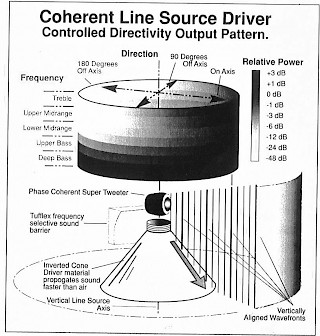
Sub Bass Activator
The Ohm Sub Bass Activator™ extends bass response, increases power handling and reduces distortion in vented and passive radiator speaker systems. By using the Sub Bass Activator™, Ohm speakers can be driven to much higher power levels because they don’t waste power trying to generate frequencies that can’t be heard anyway.
SBA™ is basically a high-pass filter that is under-damped. This means that the high frequencies are passed without effect. However, at the point where low frequencies begin to cut off, there is a slight boost.
As a result, the very low frequencies are attenuated substantially (12 dB per octave!) and there is a slight rise in the output just above that frequency range. The response of the speaker now extends to a lower frequency. Above that frequency the rest of the bass and the midrange are unaffected. You get more bass out of a little cabinet than you would otherwise.
When using Thiel/Small parameters, it is like using a sixth-order system with an equalizer, but the equalizer is passive. When implementing the SBA™, it is very important that the design engineer carefully tune the system’s electrical filter and mechanical filter (the passive radiator’s mass and compliance) to achieve the optimum response.
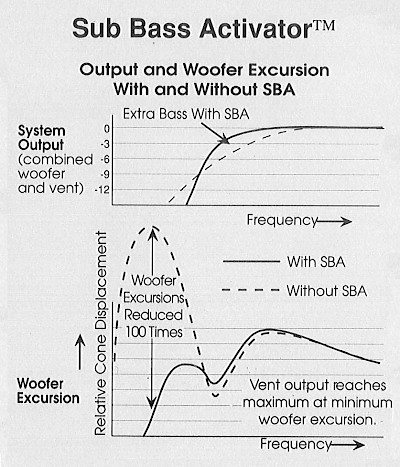
The big advantage is a reduction (the shock absorber effect) in woofer excursion below the cut-off response range of the speaker. In vented systems, normally the woofer and vent run against each other and you get gross excursions with no output when a signal is driving them below that frequency. This causes the speaker to be driven into distortion and can muddy up the midrange, which is very audible. SBA™ greatly reduces these problems.
